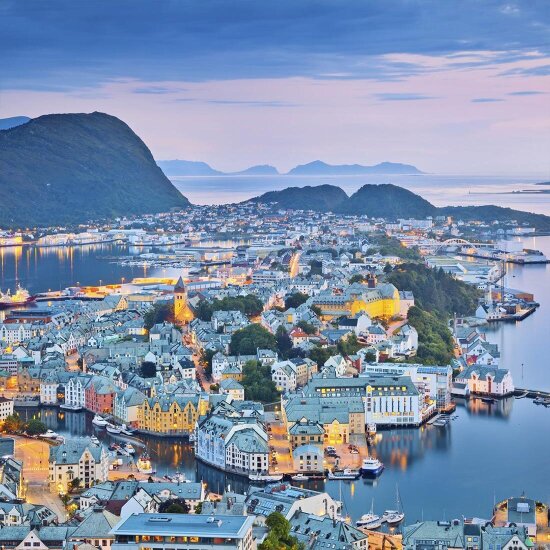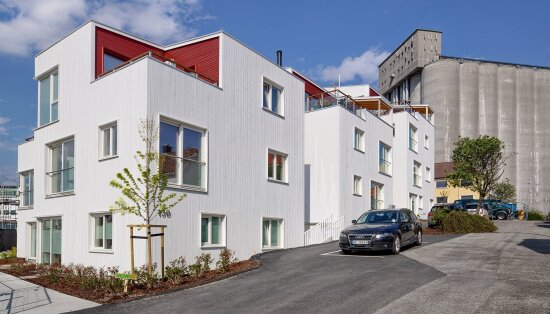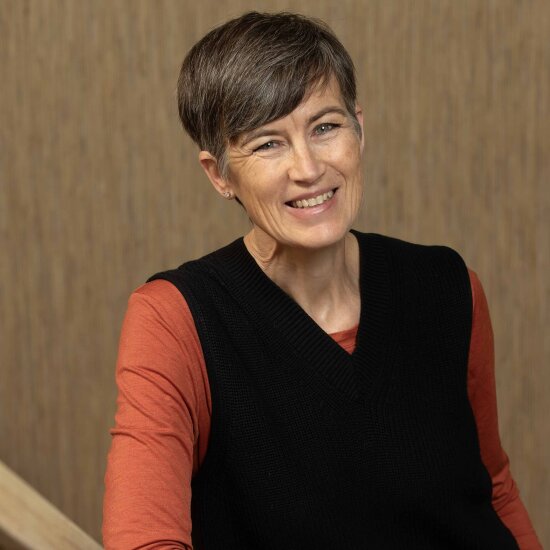In Norway, urban traditions reach back more than thousand years to Viking settlements. Since then, the development of trade and crafts has been the driving force in urban development, until the 1800s when industrialisation created the need for more people in the cities. In the post-war period, the relocation from rural areas was mainly due to the growth in jobs in the public sector.
One of Europe’s fastest growing cities
The move from rural areas into the bigger towns and cities because of work and other opportunities is still a significant tendency in Norway. Today, over 80% of Norway’s population lives in the cities, and the number is increasing. Oslo is one of Europe’s fastest growing cities, and the population is expected to rise by 30% in 2030.
Although Norwegian towns are still small on a global perspective, Oslo being the largest with just over 670 000 people and Bergen number two with around 250 000, the challenges they face such as, pressure on transport and infrastructure, housing shortages, problems with density in the cities, air pollution, climate change, segregation and an ageing population, are also known worldwide. In addition to this, migration from rural areas to the cities is causing another set of challenges.
Green mobility – Oslo’s stronghold is electric
The Norwegian government has rolled out an ambitious strategy for electric vehicles. Statistics published at the end of 2018 show that 1 in 4 electric cars sold in Europe end up in Norway. With a population of only five million, this makes Norway the world leader in market share of electric vehicles.
Oslo is the world's electric car capital but is also becoming one of the world's most important cities to try out electrical solutions in several other sectors, including public transport, the maritime sector, and in the construction industry. The results have already been noticed abroad and as one of the reasons for the European Commission selecting Oslo as the European Green Capital 2019.

Photo: Oslo kommune
Public-private collaboration
Urban development in Norway has gone through significant changes during recent years. From being all about master plans and the grand visions of one architect or a select committee, we now see a much more complex collaboration between a range of actors. When compared to its Nordic and European neighbours, Norway has a relatively high percentage of private property ownership, which naturally affects the urban development process, encouraging closer collaboration between the public and private sector.
Citizen involvement is also becoming a more and more integrated element of the urban development process. Digital solutions are helping to provide more information to engage citizens and end-users, offering further opportunities to influence their living environment.
Collaborating
Examples of this change in the landscape of local democracy can be seen in the initiative Pådriv (Front Runner), an open network of individuals and organisations across sectors, collaborating to find workable and sustainable solutions in urban development. Furthermore, the project Folketråkk (Citizens’ Tracks) is setting about establishing a digital platform of ever-evolving information about what people think about urban development and what they want to see in their neighbourhoods.

Photo: Shutterstock
Smart cities
The smart city concept is revolutionising the way cities operate, and Norwegian municipalities are eagerly developing strategies to cater for the adoption of new technology. Smart energy grids, smart waste and smart water management systems are only some of the focus areas.
Visualisation of big data is offering lots of new opportunities for sustainable urban development. The municipality of Ålesund is using their unique expertise environment within visualisation and simulation to create a digital twin, making it easier and more efficient for urban planners and policymakers to make accurate decisions without tearing up whole streets.
Small places – big on innovation
A key characteristic of governance in Norway is the policy of support for the regions, which allows cities and districts of all sizes to distinguish themselves as strong, independent and innovative.
While we see a decline in general of the population in the more rural areas of Norway, there are a few exceptions. Driven by passionate people working either as entrepreneurs or in public institutions, there is a coming together of bright minds, strong will and innovation.
Two great examples
Two great examples of where this is happening are Træna and Stokkøya. Two of the smallest municipalities in the whole of Norway, each is repurposing its identity as a destination. Combining arts, culture and business, with festivals, workations, team-building activities, food and much more besides. They are in as much living laboratories that are not only sustainable but also offer something for the bigger towns and cities to learn from.

Photo: Vardehaugen arkitekter
Sustainable living – experimenting with new models
In Norway, as in several other countries like Denmark, Sweden and Austria, there is an emerging interest for alternative ways of living. An increasing number of single parents, people living longer and loneliness in general – the society is changing, and the need for new housing models taking into consideration the diversity of people and life situations, is growing.
Vindmøllebakken in Stavanger is a commercial, residential development model for socially sustainable community living. The idea behind the model is that you have everything you need in your private flat, but also have access to great communal facilities that you share with your neighbours.

